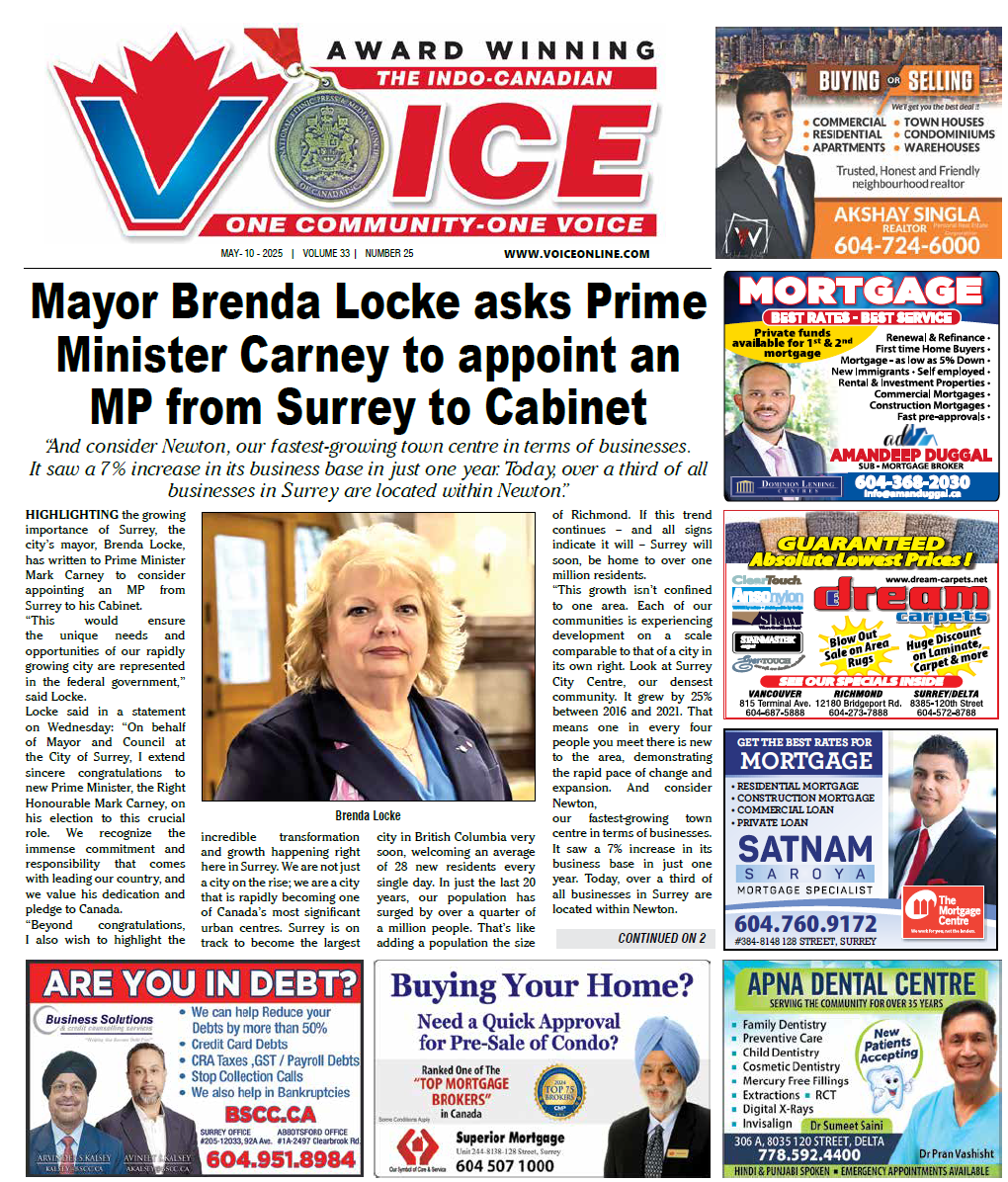WORKSAFEBC is launching an awareness campaign to inform newcomers to British Columbia that all workers have the right to a safe workplace — from day one on the job — and are covered by WorkSafeBC insurance regardless of their immigration status or term of work.
Recent research from WorkSafeBC reveals that workers who have been in Canada for five years or less are significantly less likely to speak up about workplace health and safety and are less aware of their right to file a claim if they’re injured on the job compared to those born in Canada.
WorkSafeBC research found that 50 per cent of Punjabi-speaking workers felt they had to tolerate health and safety risks to keep their job, and 36 per cent feared that speaking up about unsafe conditions could harm their reputation.
“WorkSafeBC is reaching out to newcomers to reinforce a critical message: You have the right to a safe and healthy workplace,” says Sandeep Mangat, Manager of Prevention Field Services at WorkSafeBC. “And if your job task is unsafe, you have the legal right to refuse work, without fear of retaliation or job loss.”
Worker rights:
Workers have the right to know about hazards in their workplace and have the right to participate in health and safety activities in the workplace. Workers must also be provided with the necessary training, supervision, and personal protective equipment to mitigate risks.
“If you believe a task is unsafe, stop working and report it to your supervisor or employer without fear of repercussions, so they can address the hazard,” says Mangat. “If the issue isn’t resolved, you and your employer should contact WorkSafeBC’s Prevention Line —anonymously if needed— for help in your language.
Employer responsibilities:
Employers are responsible for providing proper orientation, training, and supervision to ensure workers understand potential hazards. They must also investigate and take immediate corrective action when workers report safety concerns.
Employers must also ensure that workers understand how to report workplace injuries and illnesses, and they must cooperate with WorkSafeBC prevention officers, joint health and safety committees, and worker safety representatives.
By law, employers are prohibited from penalizing workers for raising a health and safety issue.
WorkSafeBC coverage for workplace injuries:
Workers who are injured at work must seek medical treatment right away and tell their healthcare provider the injury happened at work. All workers in B.C., no matter their immigration status or employment type, are covered by WorkSafeBC insurance. This coverage provides compensation and support for recovery. Employers cannot stop workers from filing a claim.
Interpretation services:
When an injured worker can’t speak or understand English well enough to navigate the claims process or get health care, WorkSafeBC can provide interpretation services. The sessions can take place in person, by phone or by video.
Resources:
Workers and employers with workplace health and safety questions can visit worksafebc.com for resources or call WorkSafeBC’s Prevention Information Line anonymously at 1-888-621-7233. Non-English speakers will be connected to a translator.
In April, WorkSafeBC is launching a campaign targeting newcomers to educate workers and employers of their rights and responsibilities. Along with the campaign, WorkSafeBC will be sharing online resources.
The following resources are available in multiple languages:
PUNJABI:
Workplace safety for newcomers — Know your rights from day one (Punjabi)














